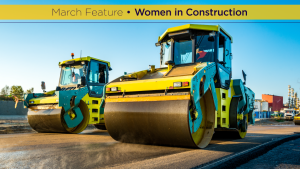They may not take the shine off gold but metals and minerals like copper, iron ore, cobalt, nickel and lithium are getting the spotlight to themselves these days.
The soaring prices of the metals and minerals used in electric vehicle (EV) manufacturing and charging stations reflect the growing demand as government deadlines for phasing out new fossil fuel vehicles looms.
It’s going to cause a headache for the construction industry because it too depends on many of these metals, especially copper.
There was widespread shock during the COVID-19 pandemic as prices for copper wiring started to climb rapidly, reaching an all time high of US$490 per pound in May 2021 before adjusting slightly to $452 in December 2021 where it roughly remains with some spikes and valleys.
In 2006, where there was a previous surge, copper theft became an epidemic and police are starting to see the same trend.
This means higher security costs for construction companies to protect their assets. Thieves didn’t stop at yards. They also tried robbing electrical substations with tragic results and were stripping copper from church roofs.
As wiring prices climb for everything from powerlines to digital cabling, it has prompted discussions on alternates.
However, one of the most proposed substitutes is aluminum which at US$1.40 a pound is much more attractive.
There is huge pushback because it proved disastrous when it was first used in the 1970s. While proponents say it is safe, some insurance companies will not provide coverage for homeowners with aluminum wiring.
The question for estimators bidding on projects now becomes how high can copper wiring prices go?
Some analysts see average copper prices hitting US$6.80 per pound by 2025 which doesn’t bode well for wiring prices.
Part of the reason is supply chain shortages which might still linger for a couple of years but also the increased demand from the EV sector which is ramping up rapidly.
The International Copper Association says EVs use much more copper than Internal Combustion Engine (ICE) vehicles.
While an ICE uses about 23 kilograms of copper, hybrid electric vehicles (HEV) use 40 kilograms, plug-in hybrids (PHEV) use 60 kilograms, while battery electric vehicles (BEVs) use 83 kilograms of copper.
Hybrid electric buses use 89 kilograms of copper while battery-powered electric buses require 224 to 369 kilograms of copper depending on the size of the battery.
There’s silver in those clouds for the construction industry, however. While material costs may rise, there may be lots of work from the mining sector in building the infrastructure such as roads and processing plants, not to mention the mines themselves, as Canada ramp up its extraction sector.
Two thirds of the TSX are mining company listings. It’s where miners come to get the capital they need to extract metals and minerals globally.
Brendan Marshall, the Mining Association of Canada’s VP of economic and northern affairs, says EVs require three times more copper than comparable combustion cars.
“This is a second industrial revolution with a scale which requires development and redesign of how we move everything,” he says. “In Canada we have all these minerals and metals and we can compete with the world. We also have the cleanest grids on the planet.”
Opening up new mines across Canada, however, remains a challenge with delays and assessments adding to time and costs even though the Federal Ministry of Natural Resources lists 31 minerals and metals as critical for the “sustainable economic success of Canada and our allies and to position Canada as the leading mining nation.”
“It’s a good problem to have in that we’re in the middle a public policy push to be sustainable,” Marshall says. “But we don’t want to have massive opposition and we need to do this in an orderly way.”
He says increasing supply of copper and other metals to keep supply going and restrain prices will require some nimble actions by government in terms of tax credits and consistency in the approvals process as well as access to power off grid to serve mines.











Recent Comments
comments for this post are closed